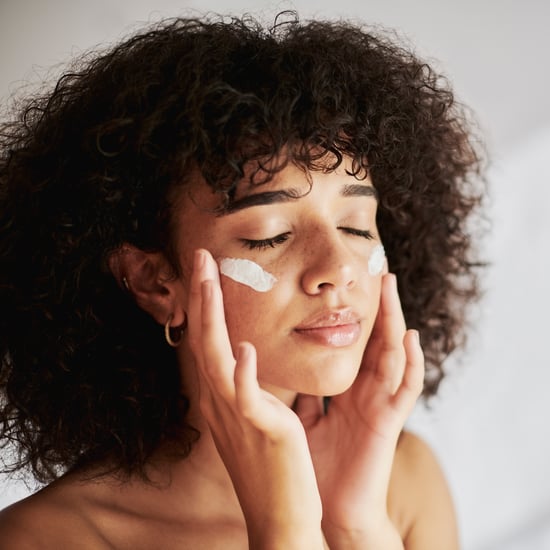What Is Contamination OCD? Symptoms and Treatment
What Is Contamination OCD and Why Is It Trending on TikTok?

"Here's what it's like to enter a house that's controlled by an extreme germaphobe mom," user zavhbruh's TikTok begins. Throughout the video, which has racked up over 44 million views and five million likes in less than a month, Zav shines a bright light on Contamination OCD, a specific subtype of obsessive-compulsive disorder. He talks about his life at home with a parent dealing with mental illness and lists off some extensive household rules revolving around cleanliness, saying, "It's a really nice house. But I don't fuckin' feel happy in it." For some, the TikTok is purely educational, giving viewers the chance to see concrete examples of Contamination OCD and Contamination OCD symptoms. But for others, the video is painfully relatable, showing the unfiltered reality behind one of the many subtypes of OCD.
There are several subcategories of OCD, including Symmetry OCD, Relationship OCD, and Existential OCD. OCD in general affects 2 to 3 percent of the population, and contamination-related OCD affects nearly half of of people with OCD, according to University of Cambridge research. "I have never felt so seen EVER in my life. My mom has severe contamination OCD and I nearly cried when I watched this," one user commented on the TikTok. Others shared their own experiences living with OCD, empathising with the mother discussed in the original video. "As someone with contamination OCD, I get where she's coming from," one commenter wrote. "It's hard to live with us, but it's also hard for us to live with this sickness."
For those hearing about Contamination OCD for the first time, the video also sparked curiosity. Some people even wondered if they might be dealing with a similar mental illness themselves. To offer more clarity, we asked a counselor specialising in OCD what Contamination OCD looks like in real life, what evidence-based treatments exist, and what people can do to support themselves or loved ones dealing with Contamination OCD.
What Is Contamination OCD?
Generally, OCD uses specific rituals (called compulsions) to reduce the stress caused by distressing, persistent thoughts (called obsessions). Since these obsessions tend to fall into categories, OCD is often grouped into different subtypes depending on the content of the obsessions, explains Amanda Petrik-Gardner, LCPC, LPC, LIMHP with a specialty in anxiety, OCD, and BFRB treatment. "Contamination OCD revolves around a fear of something becoming impure or unclean," Petrik-Gardner says. A common obsession for someone with contamination OCD might sound like: "What if my water bottle is contaminated because it was sitting next to the trash can?" she explains.
Symptoms of Contamination OCD
"The symptoms of contamination OCD are the same symptoms of OCD as a whole; the presence of obsessions and compulsions," Petrik-Gardner says. "While the most common obsession one may think of with contamination OCD is a fear of dirt and germs, contaminants can greatly vary. This can include doubts about bodily fluids, diseases, toxins, radiation, contaminants in foods, environmental contaminants, lead poisoning, or harmful cleaning products, to name a few."
The compulsions used to cope with these obsessive thoughts also depend on the person, but they're mainly intended to remove any perceived contaminants. "This looks like excessive hand washing, showering and bathing, grooming behaviours, and cleaning," Petrik-Gardner says. "In addition, an individual may engage in avoidance of potential contaminants, situations, and people, excessively research for answers, or engage in reassurance seeking from their loved ones."
It's important to note that OCD should not be used as an adjective to describe having particular preferences. In reality, the condition can challenge important relationships and cause significant distress, as shown in Zav's video. In fact, for someone to be diagnosed with any form of OCD, obsessive thoughts must cause cause distress, affect your social life, or be extremely time consuming (i.e. take up more than an hour of your day), per the Cleveland Clinic.
How to Treat Contamination OCD
In his TikTok, Zav says his mother is not actively seeking out treatment. However, there are ways to treat contamination OCD. "Evidence-based treatments for OCD include Exposure & Response Prevention (ERP), Acceptance & Commitment Therapy (ACT), and Inference-Based Cognitive Behavioural Therapy (I-CBT)," Petrik-Gardner says. Per the International OCD Foundation, ERP therapy allows people to confront their obsessions in a safe space, encouraging them to avoid compulsions. ACT helps people improve their psychological flexibility, rather than suppressing uncomfortable or undesirable experiences. I-CBT specifically challenges the narratives surrounding the obsessive thoughts.
"Treatment is important, as untreated OCD can impact one's functioning — whether that be their relationships, social life, or ability to work or go to school," Petrik-Gardner adds. "Untreated OCD can also lead to comorbid mental health disorders such as major depressive disorder."
How to Support Someone With Contamination OCD
If you know someone dealing with contamination OCD, you can help them by offering validation about their OCD, or even encouraging them to seek treatment, Petrik-Gardner says. "Loved ones can provide resources about OCD when ready, including what the disorder is and treatment options. This might be a website, a book, a podcast, or a simple article," she explains. If, like the creator of the viral TikTok, you feel you may need support as a loved one, Petrik-Gardner says therapy can be a great resource for you as well.







